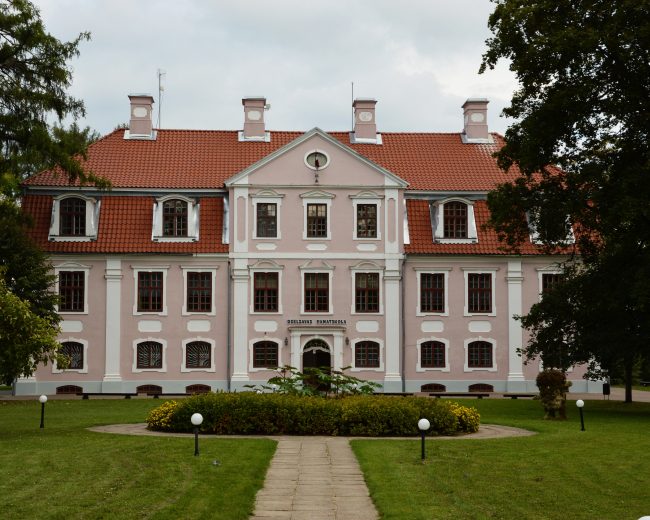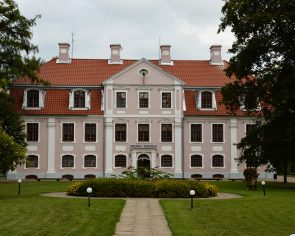Dzelzava Castle
Dzelzava Castle currently functions as a school. However, it has also preserved its royal image, which is cunningly hidden in the trees!
Behind the manor house, there was probably a garden with a regular layout, which was transformed as a result of further economic activity. Today, the complex is surrounded by a small manor park built in the 19th century with plantings of local and foreign trees and shrubs, which is perfect for a walk.
The territory is open to a large number of visitors.
The manor was owned by the Wainecken family at the end of the 16th century. The owners changed in the 17th century and the manor was under the management of von Klodt (Klot) in 1679. The manor was owned by the von Igelstrom family from 1724 to 1765, but then it passed into the ownership of von Tranze (Transehe). From 1868 to 1920, the manor belonged to the Transehe-Roseneck family.
After the agrarian reform, from 1917 to 1940, the municipal administration was located in the manor. In 1940 a school was opened here. The school is still located in the building.
A baroque style palace of the middle of the 18th century, which belonged to the von Tranzē-Rozenieki (Transehe-Roseneck) family. The ancient name of the castle was Selsau.
The farm buildings of the complex - stables, smithy, gardener's house and servant's house, were built in the period from the middle of the 18th century to the middle of the 19th century. A smithy with a portico of stone columns was built further from the center in 1820, which was later built over. Servants' houses are symmetrically arranged around the central square of the manor complex. The building was renovated according to the project of the well-known architect Wilhelm Boxlaff.
In the manor park there is a stage, where the social life of Dzelzava takes place during the summer months. In the manor park, there is also the monument "Par Tēvu zemi kritušiem" by the architect V. Vitand, which was opened in 1939 and restored in 1989. The monument is dedicated to the iron soldiers who died in the First World War and in the battles against Bermontians.


Working time
Outside space is always available.

